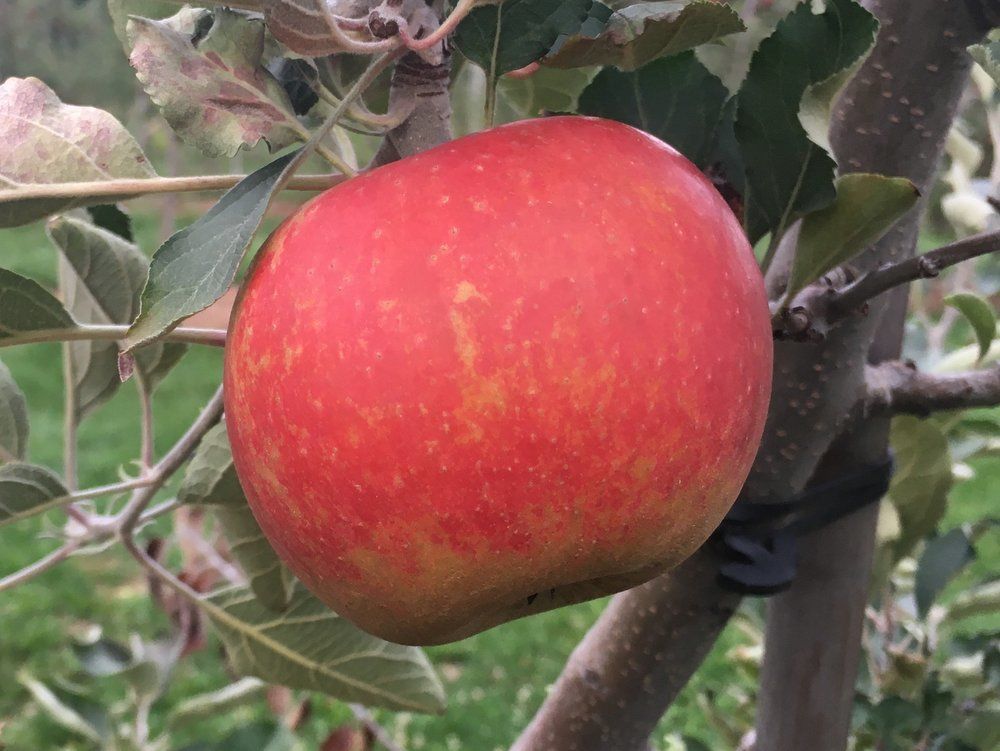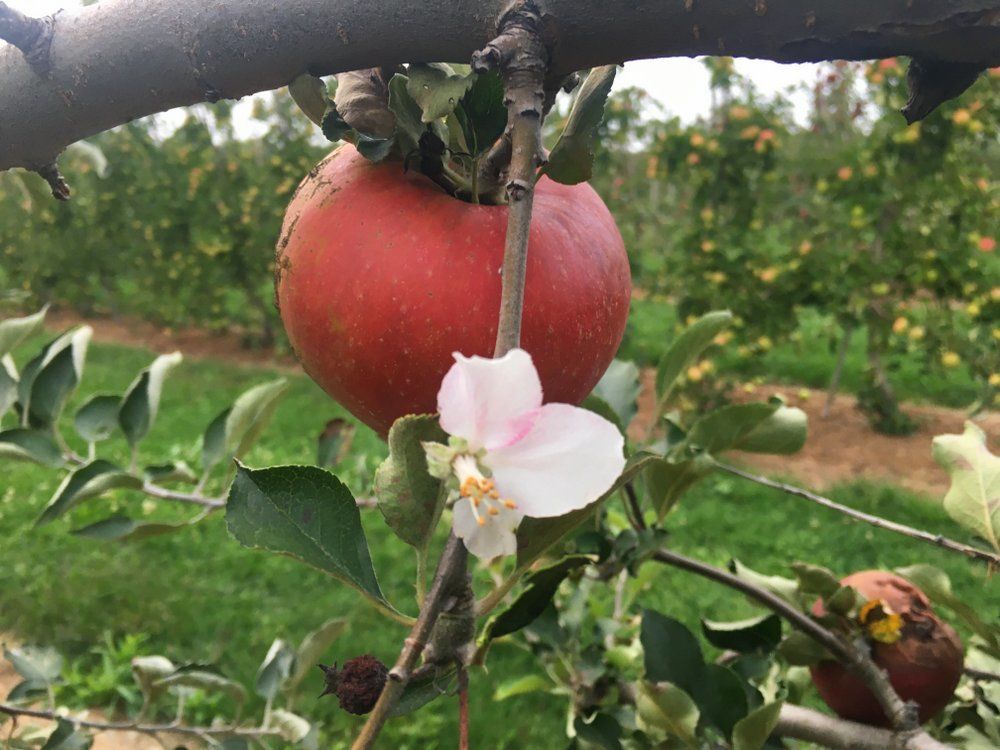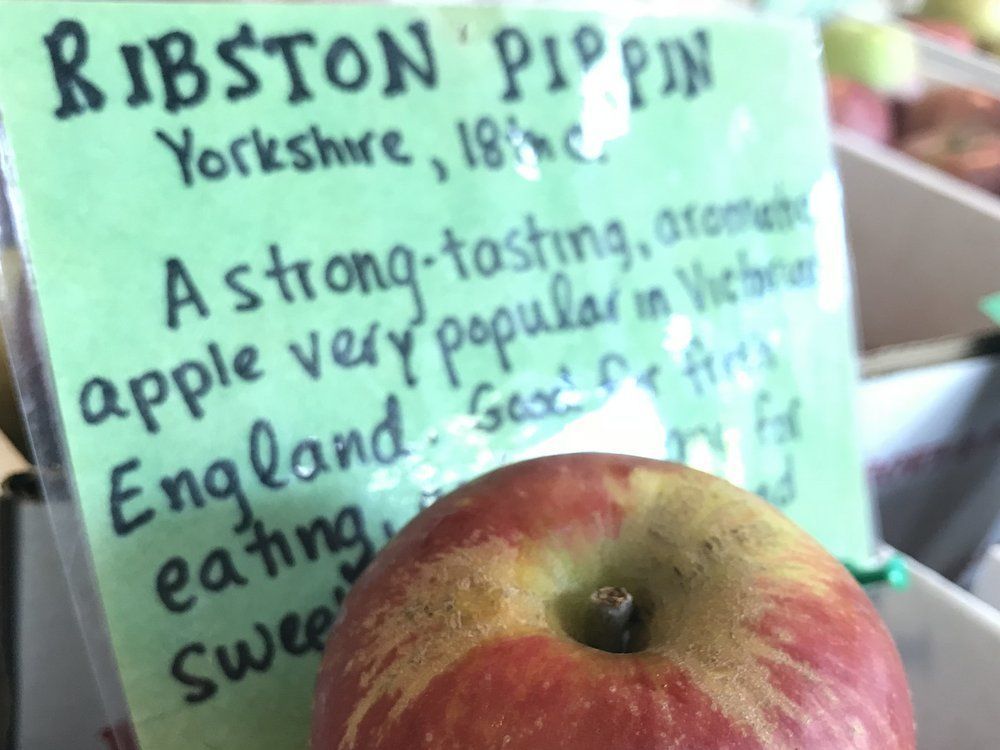An attractive, highly disease-resistant apple, ideal for organic growers.
Ribston Pippin Apple Scionwood (Spring 2024)
A Yorkshire heirloom, parent of Cox's Orange Pippin and popular in the Victorian era. Also known as Ribston, Glory of York, Ribston Park Pippin.
Slow to bear, the mature tree is very vigorous and reliably productive, with a spreading habit. It is triploid, and two diploid pollenizers should be present for full fertility. Susceptible to fireblight, this is not otherwise a difficult tree to grow, and it is a suitable antique for organic growers. It is thought to be resistant to brown rot.
The apple is medium-large, fully blushed orange with white and russet lenticels and russeting at the stem and calyx. Its flavor is intense and aromatic, as you would expect from the parent of Cox's Orange Pippin. Opinions differ as to whether its progeny is actually the better apple, but there can be no doubt that Ribston is the easier to grow of the two. The fruit will store well for up to two months, and it makes, as Jacobsen writes in Apples of Uncommon Character, "a bone-dry, lemony, gaunt, hard cider" that is high in sugar and acid.
Ribston Pippin was first cultivated at Ribston Hall, Yorkshire, England in 1688. According to Jacobsen, the apple began its life when Sir Henry Goodricke, the lord of Ribston Hall brought back some seeds from an apple he had enjoyed while traveling in Normandy. One of the seeds grew into a tree even better than the French original, producing the Ribston Pippin. By the 1800s it had become a favorite variety in England, but in the second half of the century it was pushed from the spotlight by it's child, Cox Orange Pippin.
Volume Pricing
| Quantity | Ribston Pippin Apple Scion |
|---|---|
| 1 | $12.00 |
| 2-5 | $7.00 |
| 6-10 | $6.00 |
| 11-99 | $5.00 |
| 100+ | $4.00 |
The Fruit
Fruit Type
Category: Apple
Subcategory:
Heirloom, Cold-Hardy
Fruit Uses & Storage
Uses: fresh eating, cider, baking
Storage duration: one to three months (approximate, depending on storage conditions)
Fruit Appearance
Skin color: orange
Flesh color: yellow
Fruit Origins
Parentage: seedling of an unknown French apple
Origin: Yorkshire, England
Introduced in: 1707
Introduced by: Sir Henry Gooricke
The Environment
Calendar & Geography
USDA zones: 4 - 7
Chill hours: Not yet determined
Ripening date: Sep 29 (approximate, in New York State) + 14 days after McIntosh
Diseases & Pests
glossary
Brown Rot, Blossom Blight, Fruit Rot: Resistant
Fireblight: Very Susceptible
Pollination
Pollination Factors
glossary
Bloom group: 3
Is it self-fertile? N
Is it fertile? N
Ploidy: Triploid
Pollination Partners
This table shows the first few results from a full search for pollenizers of Ribston Pippin Apple. Please see our Pollenizer Search to run other queries and read how the application uses various factors. Also read more about fruit tree pollination.
| Tree | Currently in Stock |
|---|---|
| Florina Apple | 0 |
| Porter's Perfection Apple | 0 |
| Spitzenburg Esopus Apple | 0 |
| Virginia Crab Apple | 0 |
| Binet Rouge Apple | 0 |
| Rubinette Apple | 0 |
| Bramtot Apple | 0 |
| Mother Apple | 0 |
| Repinaldo Do Liebana Apple | 0 |
| Muscadet De Dieppe Apple | 0 |
| Kingston Black Apple | 0 |
See all pollination matches for Ribston Pippin Apple
Featured Products
A few things we're loving right now...
A full-flavored, freestone white peach.
One of America's oldest apples, good for storage, baking, and cider.
A widely-grown, large, yellow-fleshed nectarine.


















